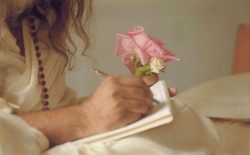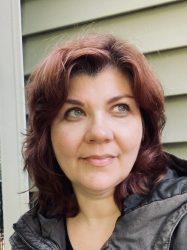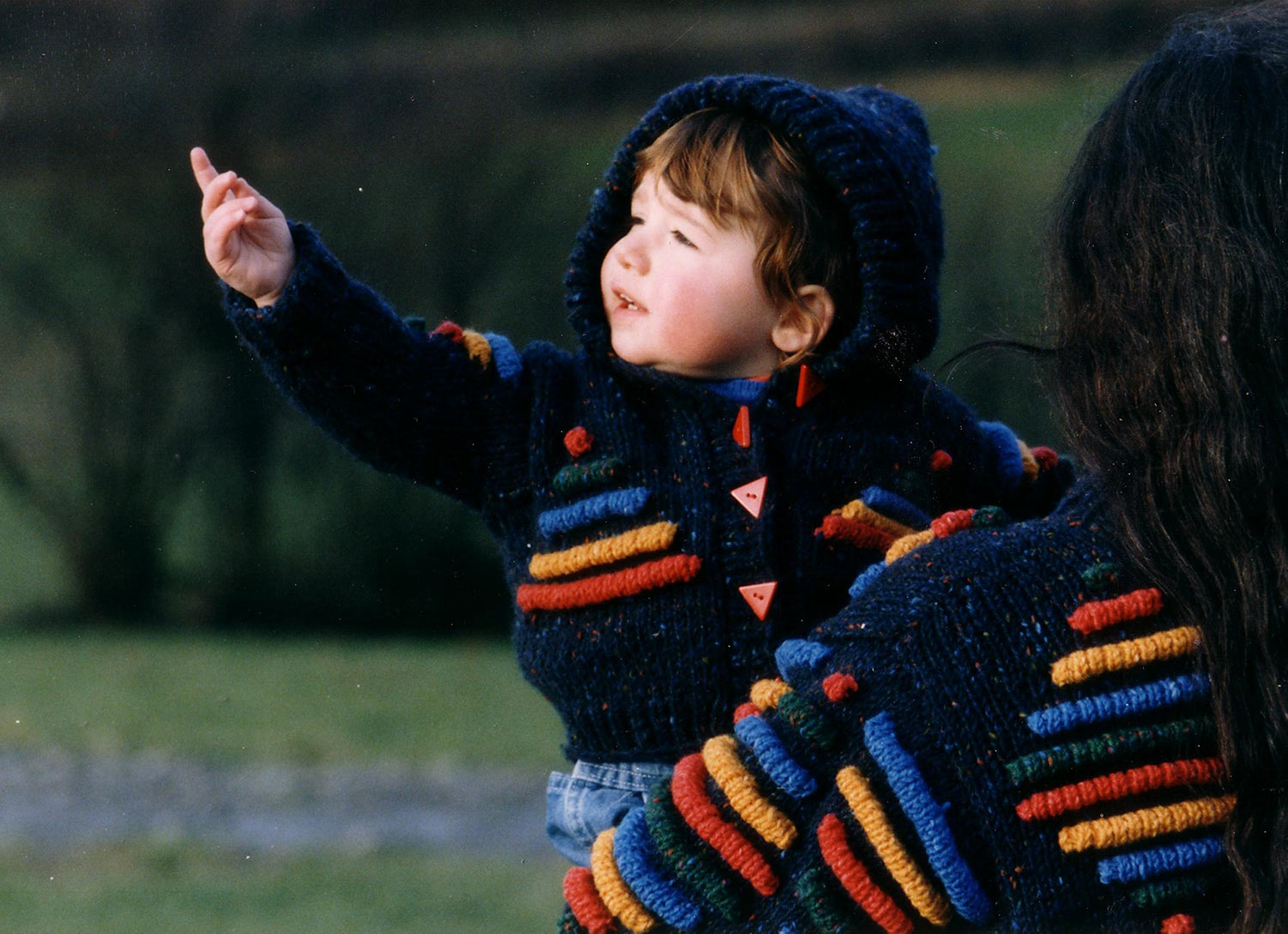
A High-Fashion Designer Breathes Life into Facemasks
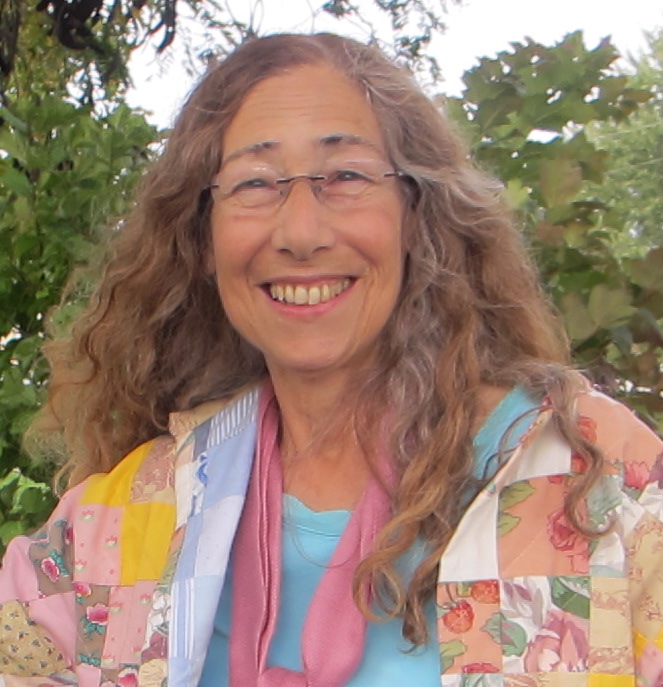
These days, many women are staying home in pajamas or sweats. Going out to the mailbox and for groceries might be the most fashion-demanding events of the week. I spoke to Susanna, a successful sweater designer who’s lived and worked in New York City, Ireland and Wales, about how she’s employing her design, knitting and sewing skills for women these days.
JH: Did you always love clothing design?
SH: My mom always made clothes, and was fairly fashion conscious, so I guess it rubbed off on me. She was also a fabric buyer, so textiles filled her own sewing room and I got to learn about and enjoy all different fabrics and ways to use them.
JH: Did you study art or design in school?
SH: I never went to art school, but we always did art at home with both parents, who had different skills. Textiles from my mom, and print-making, sculpture, photography, and more from my dad.
JH: from where did you draw inspiration?
SH: I had wonderful history teachers, and always loved history, so a lot of my designs were drawn from historical fashions and artists. We always went to museums and galleries, growing up in New York City.
JH: how did you start up as a creator and designer, running your own business in Ireland?
SH: I borrowed a knitting machine when I moved to Ireland and started selling some sweaters in craft shops. Then I moved to back to my hometown, NYC, and found a yarn company in the US which made heathery type yarns like the ones I loved from Scotland, England, Wales and Ireland. My parents loaned me some money to get started, to make some samples. When I took the samples to the sweater buyer at Bergdorf Goodman’s in Manhattan, she ordered quite a bit. So then I found some knitting ladies, and started production. When I went to see buyers in other stores, they asked where I had already sold my sweaters. When they heard “Bergdorf’s”, they all wanted to place an order. I guess I got lucky – Nature Support I call it! I paid back my loan by the end of the first season.
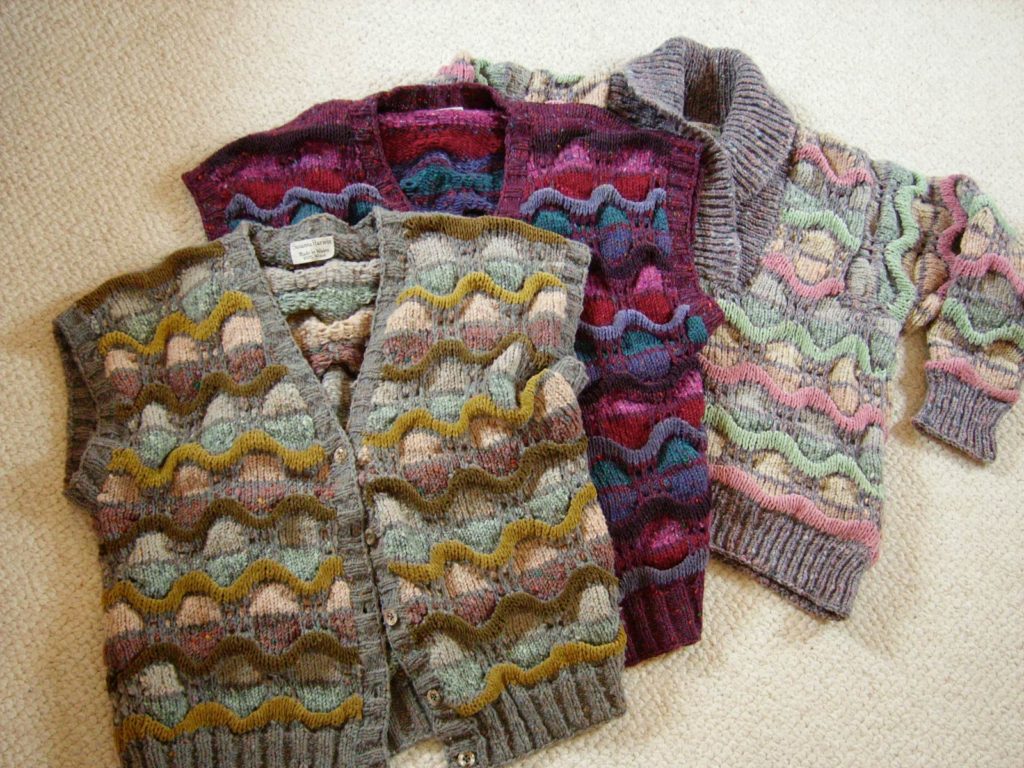
JH: I remember seeing your clothing being sold in the estimable Henri Bendel, haute couture in New York City. What other stores sold your creations?
SH: Nordstrom, boutiques on Madison Avenue in NY and Rodeo Drive in Beverly Hills, and lots of other high-end department stores. Then when I moved back to Wales to have a cache of more knitting ladies and wonderful yarns, sales went international due to my participation in fashion trade fairs in NY & London.
JH: Did you use a loom? Who taught you to use it?
SH: I used looms for both thin yarns and chunky yarns. Initially it felt like I had ten thumbs, and the yarns kept falling off the loom. I found a lady near where I was living in rural Ireland who taught me the basics, and then I explored interesting textures and patterns—so the designs looked as if they were hand-knitted—and I used unique buttons, so my business developed into a niche market: in between hand knits and machine knits.
JH: How long from conception to finish did it take to create one of your sweaters?
SH: One had to present about 30 new designs with a choice of color-ways at the fashion trade fairs. These fairs were held six months in advance of the time that the garments were needed in the stores. For example, I spent part of a winter in Tuscany, and was inspired by Italian Renaissance artists in the Ufitzi Gallery in Florence to design the sweaters for the following winter. I would sit in the Tuscan villa gazing out onto a valley below, with pencil and graph paper designing.
Another time, my family had a Spring trip to the deserts of New Mexico, and I developed a range of sweaters with a cactus theme in cotton, and took them to the September trade fairs for the following Spring season. I made sets of swatches and patterns of the various garments to several sizes, ordered the Swiss cotton yarns and took the various sets with the yarns to the 25 knitting ladies. It probably took each of them a couple of days to make a sweater. I collected the sweaters and took them to another lady who dealt with pressing, buttons and labels. Then the sweaters were shipped.
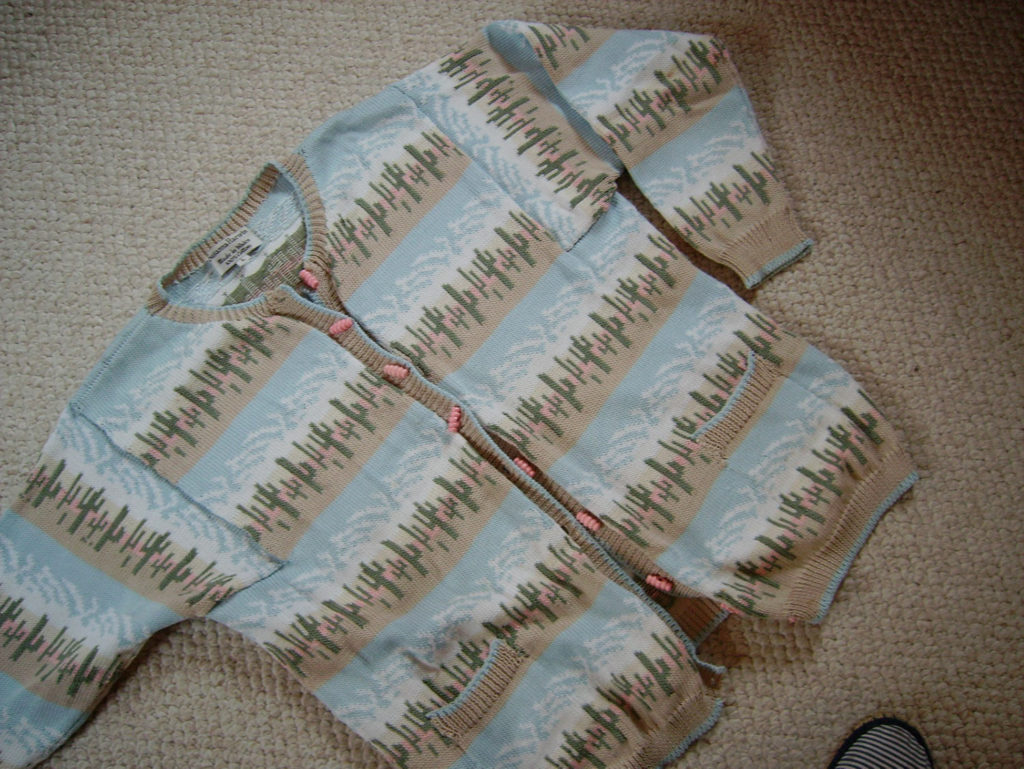
JH: I know that you continue to work with fabric but also find fulfilment in creating other things. Please tell us what other mediums you enjoy.
SH: I like to turn my hand to any kind of art. I generally give quite a quirky feel to my art. For example, I re-upholstered a chair in Beany-Babies, and I make lamps out of recycled plastic action men and women, spray painted in gold. I love ceramics, print-making, paper mache, pastels, mixed media, collage, and all textile arts, such as wall hangings, patchwork, sewing, crochet and hand knitting…oh, and the art of cooking!
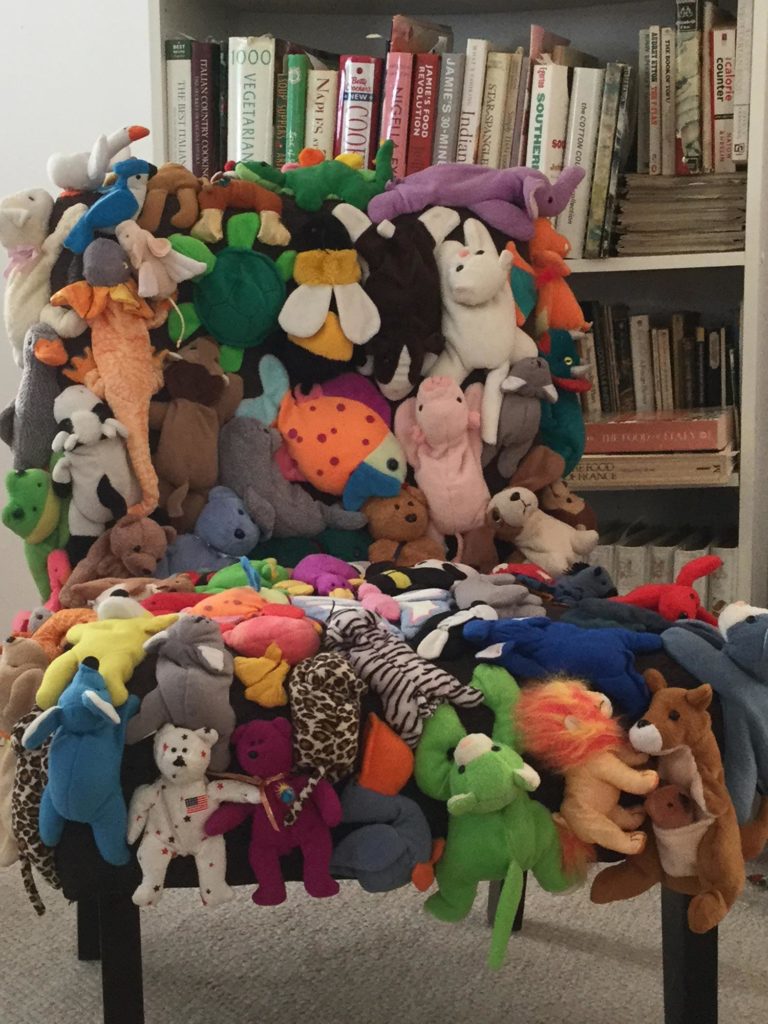
These skills expanded when I was involved in the art department where my children were at school in the UK. At one point the other art teacher and I started a program of affordable artist-led workshops for the community called Open Arts. We were awarded some grants from the Arts Council, and we did projects in all the fields of art that I love. The mixed generational groups, under the direction of inspired artists, painted the community’s pedestrian underpasses.
JH: During this time of seclusion, have you found that sewing keeps your spirits up? And what are you making?
SH: Yes, I’m making dozens of masks for people—for protection during the pandemic—out of materials I inherited from my mom. I have a sewing room full of fabrics and everything imaginable to do with sewing. Of course, they are quite bright and a bit quirky with fun patterns, and I have been inundated with requests, happily. If you have to wear one, why not wear something fun and attractive?
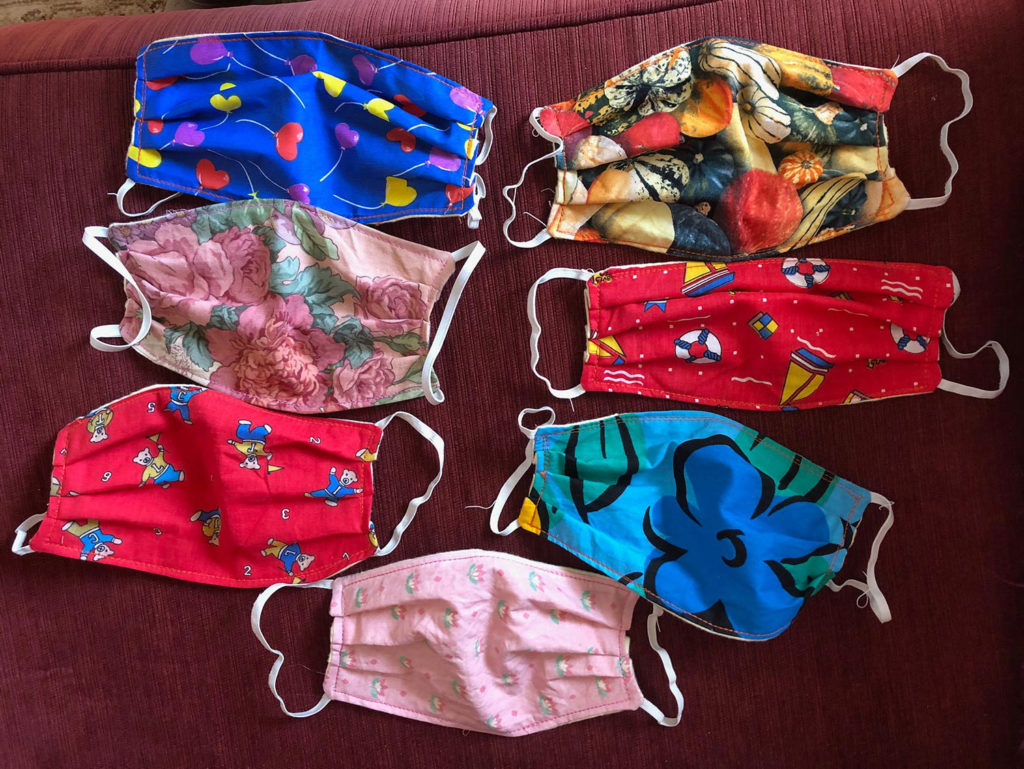
JH: What else keeps you happy, productive and energized during our time of confinement?
SH: I am always regular with the practice of the Transcendental Meditation technique, which keeps me energized, creative and inspired. Also, I’m helping out with online courses as a Teaching Assistant for Maharishi International University. All the students, faculty and staff practice the TM technique, which increases focus, intelligence, memory, creativity and even happiness. It’s wonderful working with alert inspired students and with the knowledge of how everything interrelates and evolves, in this university setting of Consciousness Based Education. The students seem so appreciative to have found this type of education, which expands the inner awakening of themselves and of their capacity through Transcendental Meditation as well as offering them the knowledge found in academia.
JH: Thank you for sharing photos of your sweaters and masks with us. Any other comments?
SH: We need to do certain things in life to fulfil our potential, even in this time of self-isolation. Apart from having TM as a welcome, effortless tool to expand our consciousness and live a healthy life with less stress, we need to give back to the planet, we need love and friendship and we need to be creative in some form or other.
Connect with your local TM teacher
About the Author
Janet Hoffman is the executive director of TM for Women Professionals, a division of TM for Women in the USA

